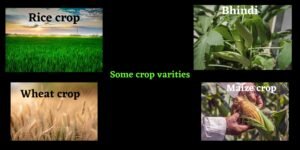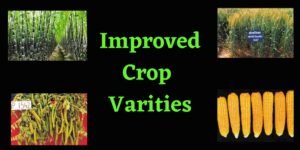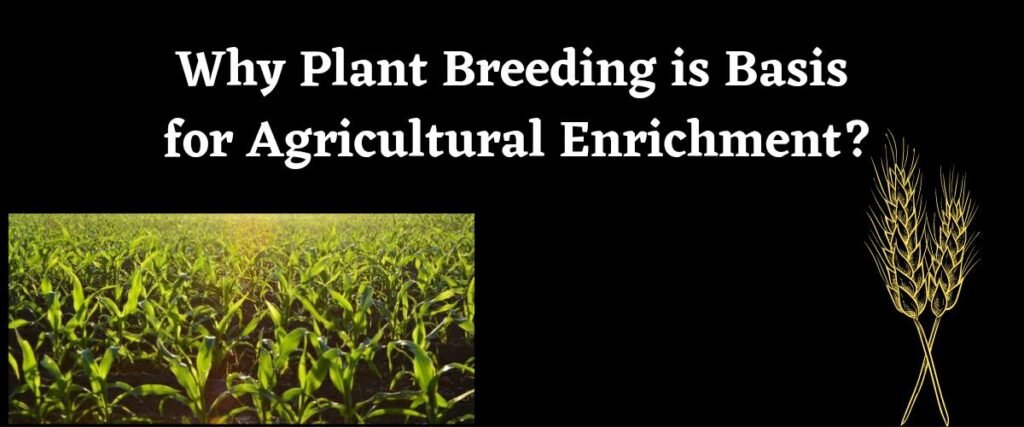Welcome to kashibiology.com
In this post we have to learn all about the Plant Breeding for academic and medical competitive examination point of view.
Plant Breeding
It is the genetic improvement or more technically we can say that it is the production of improved varieties of the food crops in order to create desired plant and that plants are better suited for cultivation, gives better yield as well as show disease resistance and tolerance to abiotic and biotic stress.
In India the green revolution was responsible for our country to not only need our food requirement input production but also help us to export it.
M.S.Swaminathan is considered as the father of the Green Revolution in India.
There are different types of revolution related to the increase of production of food and food based products.
Such as-
- Green revolution related to grain production.
- Yellow revolution related to oil based plant production.
- White revolution is related to the increase of milk production.
- Silver revolution related to increasing egg production.
- Blue revolution is related to the increase of fish production.
- Pink revolution is related to the increase of meat production.
What is the Genetically Engineered Insulin?
Improved Varieties of Crops
For production of any type of genetically improved plant variety. There is a need for some checks which are related to plants.
Such as plant breeding done for following purposes
- for disease resistance.
- for high yielding varieties.
- for quality improvement.
- for nutrients improvement.
- for environmental stress (like high salinity, drought & temperature) tolerance.
The main steps for developing a new plant variety by traditional breeding techniques are as follows-
1-Germplasm Collection
In many crops pre existing genetic variability is available from the wild varieties or relatives of the crop collection and preservation of all the different wild varieties or species.
It is a very effective plant breeding program.
Germplasm is the sum total of all the alleles of the genes present in a crop.
It consists of following types of materials-
- Cultivated improved varieties
- Indigenous or native varieties
- Pure lines
- Wild species
- Improved varieties which are no more in cultivation.
The entire collection of plants or seeds having all the diverse alleles for all genes in a given crop is known as Germplasm collection.
The collected Germplasm in the form of tissue or seed is usually maintained at low temperature for future purposes or during the transportation by the technique called Cryopreservation.
2-Evaluation & Selection
The Germplasm is evaluated to identify plants with desirable combinations of characters.
It means the features or characteristics you want in the improved varieties of crop.
Selection of parent plants is picking of seeds of only those plants for multiplication which have the desired traits.
3-Cross Breeding
It is the third step in the plant breeding program. In this hybridization is the crossing of two or more types of plants with desirable features for bringing their traits (traits for which hybridization is doing) together in the progenies plants.
Plant hybridization may involve a single cross in between two plants or multiple cross in between more than two plants.
The procedure of hybridisation involves emasculation, begging and tagging.
Emasculation is removal of male reproductive part or stamens or anthers.
Because in anthers male gametophyte or pollen is present.
Pollen after pollination produces two male gamete nuclei.
After emasculation flowers are covered by appropriate bags. This step is called bagging.
Then emasculated flowers tagged. Which indicates the time of emasculation, bagging and whatever information which is important.
There is no need of emasculation in unisexual flower that is, in case of female flower where only pistil or carpel is present.
Such as in Dioecious plants Papaya & Date palm.
4-Selection & Testing
This Step includes selection among the progeny of hybrids which has desirable features.
Now they are self pollinated for several generations until they come to a state of uniformity or homozygosity.
Therefore the characters will not separate in the progeny during the inheritance.
5-Testing,Release & Commercialization
The newly selected hybrid plant lines are evaluated for their yield and agronomic traits like- Nutrition quality improvement, disease resistance and environmental stress tolerance.
For this the improved plant varieties are growing in a research field under optimum condition.
After testing and evaluation at different parameters the improved crop varieties are ready for the farmers.
Let’s understand the overall steps example of production of sugarcane variety by plant breeding which has higher yielding.

Saccharum barberi is the variety of sugarcane originally grown in the Northern part of India. It has a thin stem and poor sugar contents.
Similarly Saccharum officinarum grows in the southern part of India. It has a thicker stem and high sugar content.
Saccharum officinarum cannot grow in Northern India. This drawback of this sugarcane variety has been overcome by traditional breeding.
Both of these species have been hybridized and the desirable feature inherited in progeny.
The hybrid progeny is now able to grow in the Northern part of India and has thick stems with high sugar contents.
Some common high yielding varieties (HYV) of wheat and rice-
High Yielding varieties of Wheat
Kalyan Sona and Sonalika.
High Yielding varieties of Rice
Jaya and Ratna.
i-Disease resistance crop varieties
Himgiri
it is the variety of wheat which is resistance to leaf & stripe rust and hill bunt disease.
Pusa swarnim or Karan Rai
It is the disease resistant variety of Brassica or mustard against white rust.
Pusa Shubhra & Pusa snowball k-1
These are the disease resistance variety of cauliflower against black rot & curl, blight black rot.
Pusa Komal
It is the disease resistance variety of cowpea against bacterial blight.
Pusa sadabahar
It is the disease resistant variety of chili against chilly mosaic virus (CMV) tobacco mosaic virus (TMV) and leaf curl.

ii-Insect Pests resistance crop varieties
Pusa Gaurav
It is the variety of Brassica (also known as rapeseed mustard) developed against Aphids insects.
Pusa sem 2 & Pusa sem 3
These are the variety of flat bean work against Jassids, Aphids and Fruit borer insects.
Pusa Sawani & Pusa A4
These are the variety of Bhindi (Okra) and works against shoot and fruit borer insect pests.
Mutation Breeding
Some varieties of vegetable crops are also developed by mutation breeding which provide resistance against different disease causing pathogens.
For example resistance against yellow mosaic virus (YMV) in Bhindi (Abelmoschus esculentus) has been developed by transferring from a wild species resulting in a new variety called Parbhani kranti being formed.
It has the ability to show resistance against yellow mosaic virus.
In mutation breeding the desirable genes have been formed due to the artificial induced mutation.
This is done by the treatment of chemicals or radiation after this selecting the desirable plant with desirable features.
Similarly in Mung Bean resistance against yellow mosaic virus and powdery mildew also developed by mutation breeding.
In many plants, insect and pest resistance also present naturally due to their morphological chemical or physical characters.
Such as-
Hairy leaves in many plants are associated with resistance to insect pests.
Such a feature is seen in resistance to Jassids in cotton plants and in cereal leaf beetles in wheat plants.
The solid stem in wheat provides protection against stem sawfly.
Smooth leaf and nectar-less cotton varieties do not attract bollworm.
Low nitrogen content, sugar content and high aspartic acid (which is the type of amino acid) in maize plants develop resistance to stem borer.
Conclusion
Overall we can say that how plant breeding help us to achieve green revolution objectives.
This is the short discussion about the Plant Breeding. Hope you have to understand basic knowledge about this.
If any suggestion or updating require from your side please comment us.
Thanks for reading the Post.

